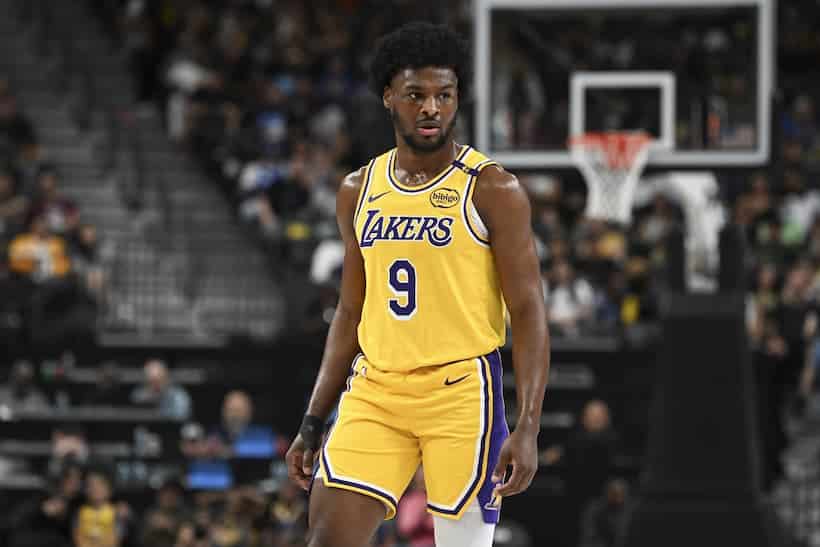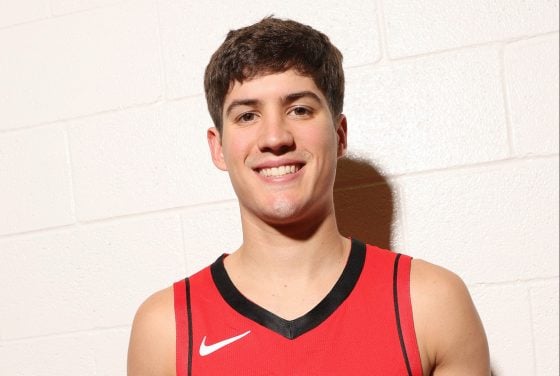Key Highlights:
- Despite losing, the Sacramento Kings may have stumbled upon a lineup configuration that could cause the Oklahoma City Thunder some issues
- Chet Holmgren’s unique skillset creates a lot of problems for most NBA teams
- Small-ball isn’t completely dead. In fact, when done properly, could be a way to neutralize Holmgren’s impact
On the surface, the Sacramento Kings’ 105-112 loss to the Oklahoma City Thunder may seem like nothing more than a failure, especially after they forfeited a 20-point lead. However, if you look a little closer, the Kings may have stumbled upon a trick that could help them (or another team) neutralize the Thunder in the playoffs.
Small-Ball Isn’t Dead Yet
Those who follow my work know that I am a firm believer that big bruising centers are back in vogue. Pure skill is better than pure size. But do you know what’s better than pure skill? Size with skill. And today’s NBA is chock-full of skilled giants like Nikola Jokic and Joel Embiid.
With all these skilled bigs occupying the NBA ecosystem, small-ball lineups like the ones the Golden State Warriors deployed at the height of their powers have lost their lust. But that doesn’t mean they have gone completely extinct.
That brings us to what the Kings stumbled upon on Tuesday night. With 3:49 left in the second and starting center Domantas Sabonis in foul trouble, Sacramento substituted Alex Len (their backup center) for Trey Lyles. Lyles is 6’9 and has been listed as a “power forward” on Basketball Reference every year of his career. Despite this, he was the tallest player on the floor for the Kings, making him their de facto small-ball center.
Alongside Lyles, Sacramento also fielded De’Aaron Fox, Keegan Murray, Harrison Barnes, and Davion Mitchell (who was later substituted for undrafted standout Keon Ellis). The lineup only outscored Oklahoma City 13 to 9 during their time together, and for some mysterious reason, Head Coach Mike Brown never thought to return to it in the second half, but the flashes displayed when they were together is something that will be worth monitoring in the postseason.
Why Big Ball Doesn’t Really Work
We mentioned earlier that the reason small-ball is losing popularity is that the skilled centers of today will just manhandle these lineups. Oklahoma City’s unicorn starting center, Chet Holmgren, is both tall and skilled. Holmgren’s shooting and length is the keystone to fully unlocking this Oklahoma City team. His outside shooting (57th percentile 3-point percentage, per Dunks & Threes) gives adept drivers like Shai Gilgeous-Alexander and Jalen Williams deluxe spacing to work with, and his length gives their defense some much-needed rim protection (98th percentile block rate).
The only real tradeoff to his game is that he’s not very bulky. His frailer frame has led many people to assume that he would struggle against the broader bigs we’ve been alluding to. However, those concerns are far overblown, as he’s performed fairly well against most of his sturdier peers (see the chart in our Holmgren breakdown). On top of that, the Thunder are really good about swarming these bigs and disrupting their flow. Oh, and if they really wanted to, they could put Jaylin Williams on the other team’s center and have Holmgren operate as a weakside rim-protecting spy (they did this against Embiid in their most recent clash against the Philadelphia 76ers).
Why Small Ball May Work
That brings us to the small-ball wrinkle of it all. Holmgren is one of the best shooting/spacing centers in the NBA. So, he’s often pulling the other team’s primary rim protector (their classical center) out of the paint. Plus, most of his opponents aren’t credible floor spacers. So, he can sag off them and help provide extra resistance in the paint. And since the Thunder are better at handling bulkier bigs than initially expected, most teams are at a strategic disadvantage when they play a classical center against Holmgren.
So, to avoid this disadvantage, why not play a small-ball center who can shoot? On the year, Lyles is shooting 37.9% from three (65th percentile) on 6.9 3-point attempts per 75 possessions (75th percentile). That means that Holmgren can’t sag off him the way he would on a more traditional center.
Yes, Lyles isn’t as good of a rim protector as most regular centers (48th percentile in block rate). But considering he’s going to get pulled out to the perimeter by Holmgren anyway, why does that really matter?
Back to Holmgren’s lack of girth. If the Kings tried a lineup with Lyles at the five against Embiid or Jokic, the two former MVPs would swiftly discard Lyles in the post. Holmgren can take advantage of significant mismatches (like this), but Lyles is big enough to hold his own against him (as we will see in just a second).
Back To The Game
That’s enough of the theoretical reasoning behind it. Let’s see what happened in the actual game.
In their first offensive possession in small-ball mode, Fox runs a pick and roll with Lyles as the screener. The Thunder decided to switch this action rather than deploy a drop coverage (their base pick and roll coverage with Holmgren) to avoid conceding a pick and pop to Lyles. Since Holmgren is now on Fox, he is forced to stay out on the perimeter, which leaves his already poor rebounding team (29th in defensive rebounding percentage) vulnerable on the offensive glass.
The Kings cash in on this opportunity for two offensive rebounds and an eventual trip to the charity stripe for Barnes.
On the next possession, the Thunder try to let Holmgren burn Lyles with a second side drive. Holmgren is a talented driver (95th percentile in true shooting on drives, per Thinking Basketball), but Lyles is quick on his feet (relative to his size). Quick enough to properly closeout to Holmgren, stay with him on the drive, and contest his shot. He’s also sturdy enough to not let Holmgren plow right through him (in fact, Lyles is able to throw Holmgren off-balance a bit).
When you play small ball, you are inherently conceding some of your team’s rim protection, which can be problematic against a team like Oklahoma City, who is ninth in the NBA in points in the paint per 100 possessions (per NBA.com). The good news is that by playing a smaller/quicker center, you can send extra help in the paint and have a better chance of rotating and recovering.
That’s exactly what Lyles and Fox were able to accomplish with this “x-out closeout” following a Gilgeous-Alexander paint touch that collapsed the defense.
A Certain Type Of Small-Ball Lineup
It is worth noting that there was something specific about the Kings’ small-ball lineup that made it particularly effective against the Thunder. By playing this lineup, the Kings had a speedy lineup of average/above-average defenders who could do an admirable job of keeping the Thunder’s cavalcade of drivers in front of them. But they also maintained their physicality advantage over Thunder.
Lyles, Barnes, and Murray are all bigger wings and forwards who can crash the offensive glass and bulldoze through Oklahoma City’s wirey operatives on drives. Fox, Mitchell, and Ellis are also fierce fighters, who play bigger than their listed heights.
That’s the key to using a small ball lineup against the Thunder. To do it properly, you need to deploy a five-man unit that is speedy enough to defend the Thunder while also being physical enough to take advantage of Oklahoma City’s greatest flaw.
The Bottom Line
I will be the first person to tell you that the sample size that I am basing my observations off of is far from the threshold necessary to consider my work here empiricism (that’s what our NBA Study column is for). To fully verify this theory, we’d need to go back and watch hundreds of small ball possessions (from multiple different teams) to see how the Thunder try to adjust/adapt to it.
I will also add that I am not advocating for a team like the Kings (who employs an All-Star caliber center in Sabonis) to completely bench him in favor of this approach. All I’m doing here is proposing a potential lineup configuration that could be used for 10-15 minutes a game to slow down the Thunder’s elite two-way attack.
Who knows, maybe that will be the difference between them scoring 115 points in a game and them scoring 111. Maybe it won’t. It’s worth trying, though, because in the playoffs, a couple of points can be the difference between an early exit and a deep postseason run.






